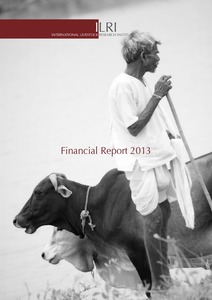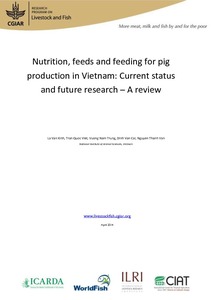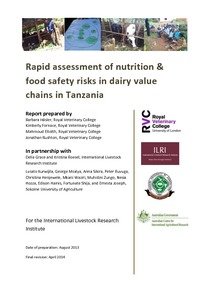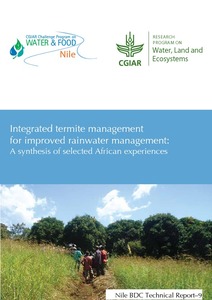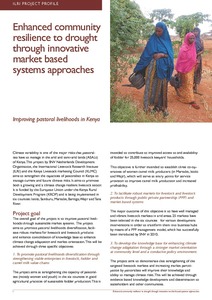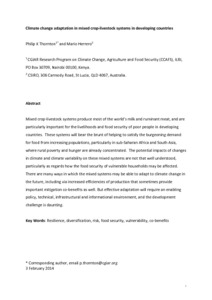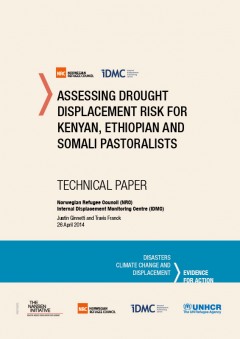MAKING VILLAGE LAND USE PLANNING WORK IN RANGELANDS, TANZANIA
INDEX 3.0 RECENT EVENTS 5.0 COMPETENT BUT IGNORED: BRINGING MAASAI YOUTH INTO LAND TENURE DECISION MAKING 6.0 CONFLICTS BETWEEN MBORORO AND THE CATHOLIC CHURCH ENDS POSITIVELY FOR PASTORALISTS 7.0 A VISION FOR A JUST AND PROSPEROUS FUTURE? THE LAPSSET CORRIDOR 8.0 PASTORAL PROTESTS IN HANSALPUR INTENSIFY 9.0 BENCHMARKS FOR LAND GOVERNANCE IN AFRICA 10.0 NEW INITIATIVES CONTRIBUTING TO MAKING RANGELANDS SECURE 12.0 RANGELANDS INITIATIVE RECEIVES FUNDING FROM SDC
Nutrition, feeds and feeding for pig production in Vietnam: Current status and future research—A review
Rapid assessment of nutrition and food safety risks in dairy value chains in Tanzania
Integrated termite management for improved rainwater management: A synthesis of selected African experiences
In eastern Africa, termites are perceived by farmers, livestock keepers, and many development agencies as serious agricultural pests that destroy pasture, crops and wooden infrastructure. Commonly use control measures have proven to be ineffective. When the CGIAR Challenge Program on Water and Food (CPWF) undertook research aimed at increasing agricultural water productivity in eastern Africa, termites destroyed early experiments designed to rehabilitate degraded land and increase water productivity.
Enhanced community resilience to drought through innovative market based systems approaches: Improving pastoral livelihoods in Kenya
A conceptual flash flood early warning system for Africa, based on terrestrial microwave links and flash flood guidance
A conceptual flash flood early warning system for developing countries is described. The system uses rainfall intensity data from terrestrial microwave communication links and the geostationary Meteosat Second Generation satellite, i.e., two systems that are already in place and operational. Flash flood early warnings are based on a combination of the Flash Flood Guidance method and a hydrological model.
Feed the future innovation lab for small-scale irrigation, Ghana: Workshop proceedings and documentation, Tamale, Ghana, 15 April 2014
Inter-connection between land use/land cover change and herders’/farmers’ livestock feed resource management strategies: A case study from three Ethiopian eco-environments
We assessed land use/land cover changes from remotely sensed satellite imagery and compared this with community perceptions on availability/use of livestock feed resources and feed deficit management strategies since the 1973s in three districts representing the pastoral, agro-pastoral and mixed crop-livestock eco-environments of Ethiopia.
Climate change adaptation in mixed crop?livestock systems in developing countries
Mixed crop?livestock systems produce most of the world’s milk and ruminant meat, and are
particularly important for the livelihoods and food security of poor people in developing
countries. These systems will bear the brunt of helping to satisfy the burgeoning demand
for food from increasing populations, particularly in sub?Saharan Africa and South Asia,
where rural poverty and hunger are already concentrated. The potential impacts of changes
in climate and climate variability on these mixed systems are not that well understood,
Climate change impacts on animal health and vector borne diseases
Assessing drought displacement risk for Kenyan, Ethiopian and Somali pastoralists
A new way of thinking This study reflects emerging awareness of the need to see disasters as primarily social, rather than natural, phenomena. Individuals and societies can act and take decisions to reduce the likelihood of a disasters occurring or, at the very least, to reduce their impacts and the levels of loss and damage associated with them. Disasters are thus no longer being perceived as ‘acts of God’ but instead as something over which humans exert influence.

